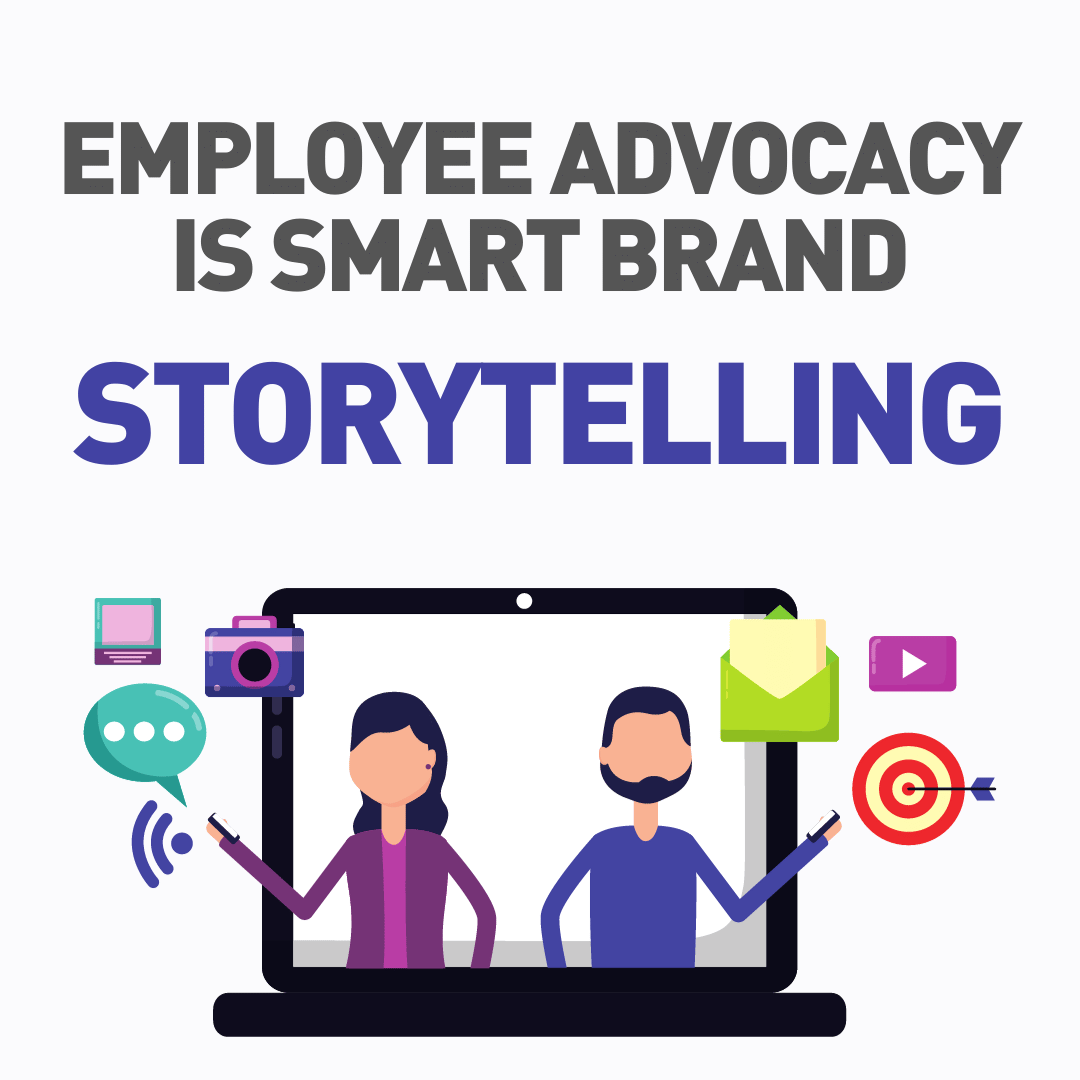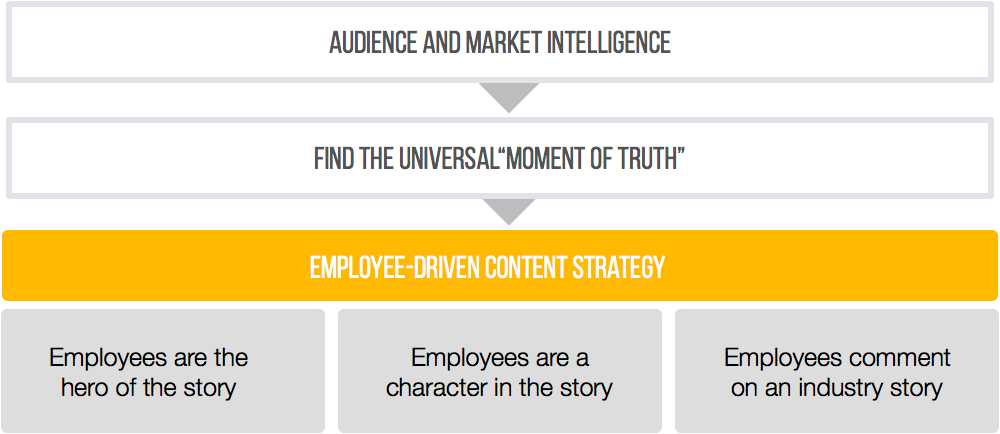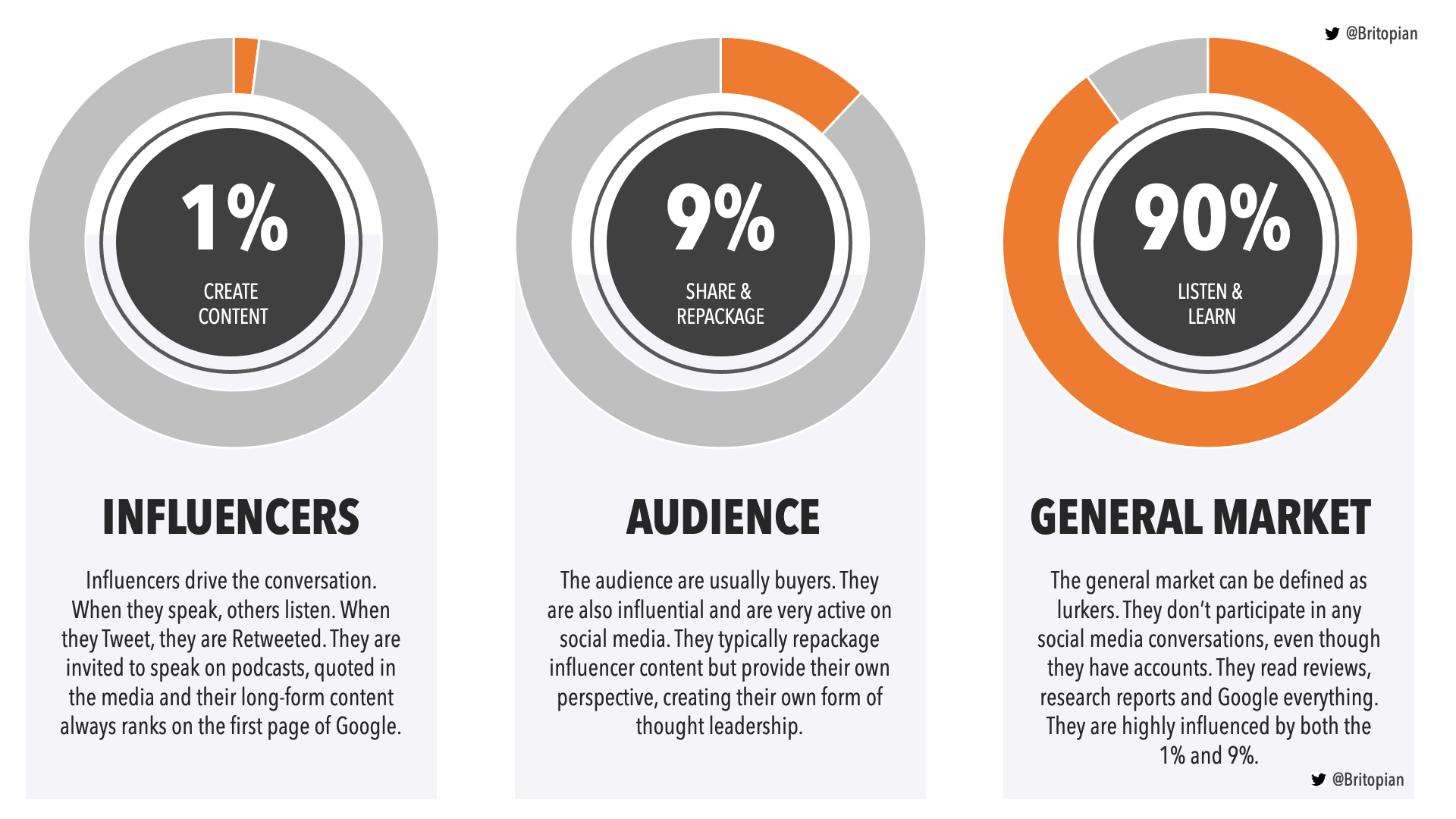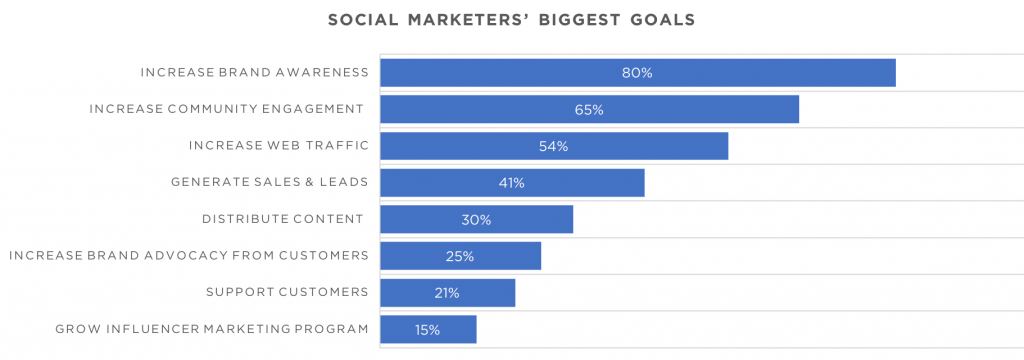Key Insights on Employee Advocacy 📈 🌐
- Employee Advocacy Enhances Brand Storytelling: Sophisticated brands leverage employee advocacy programs to innovate storytelling and build thought leadership, moving away from traditional methods.
- Employee Advocacy is a Powerful Opportunity for Brands: Employee advocacy programs allow brands to extend their reach, foster trust, and authentically humanize their organizations, with employees voluntarily sharing brand stories through diverse social networks.
- Employee Advocacy Requires Thoughtful Strategies: A thriving advocacy program requires the right technologies, content framework, and corporate culture to unlock workers’ passions and encourage them to share brand stories voluntarily.
- Employee Advocacy Aligns Corporate Narratives with Employee Interests: When corporate narratives strategically align with employee interests, workers become the best ambassadors for the brand, fulfilling their needs for purpose and community.
- Employee Advocacy is a Form of Participation Marketing: Employee advocacy is a participatory marketing channel that leverages employee dedication and advocacy, maximizing an invaluable marketing channel.
- Employee Advocacy Programs Deliver Value Externally and Internally: Employee advocacy programs deliver value externally to marketing and communications teams and have internal benefits, resulting in a motivated workforce that can help deliver a company’s digital transformation strategy.
- Employee Advocacy Increases Organic Reach: Employee advocacy can significantly increase engagement and reach compared to content shared on branded channels, with brand messages garnering more impressions and being shared more frequently when distributed by employees.
Sophisticated brands are innovating how they tell stories by building an employee advocacy program. The traditional methods don’t work as effectively as they used to, so brands must think about new ways to build thought leadership. They do so by unleashing employees to participate in industry conversations and be brand storytellers.
This approach is also referred to as employee advocacy.
Exploring Employee Advocacy
Employee advocacy represents a powerful opportunity for brands to extend reach, foster trust, and authentically humanize their organizations. However, activating a thriving advocacy program requires thoughtful strategies encompassing the right technologies, content framework, and corporate culture.
Carefully developed employee advocacy unlocks workers’ passions to share brand stories through diverse social networks voluntarily. This participatory marketing channel provides relatable credibility beyond polished ads. However, brands must provide compelling toolkits and nurture engagement to see success.
The collective benefits are tremendous when corporate narratives strategically align with employee interests. By recognizing human needs for purpose and community, brands allow workers to become their best ambassadors. But getting there involves understanding what employee advocacy is, why it matters, and which foundational components set it up for success.
What is Employee Advocacy?
Employee advocacy involves providing relevant content for employees to share on their personal social media channels voluntarily. The overarching goal is to operationalize and activate authentic brand advocates within organizations.
At its core, employee advocacy aims to:
- Identify new audiences and expand reach through employees’ diverse networks
- Amplify and extend organic content distribution through a decentralized workforce
- Humanize the brand by showcasing real employees’ perspectives and experiences
Rather than polished corporate marketing language, employee advocacy relies on workers sharing their genuine voices, passions, and stories related to the brand. This builds credibility and trust with audiences who find relatable peers more authentic than ads.
Employee advocacy represents a form of participation marketing that thoughtfully leverages employee dedication and advocacy. Tapping into workers’ natural affinity for brands they believe in maximizes an invaluable marketing channel.
Why Does Employee Advocacy Matter?
Employees tell brand stories in their own authentic voices without corporate agendas. Their experiences humanize organizations for audiences who find employees more relatable and credible than polished marketing messaging.
Tapping into this advocacy opportunity requires identifying where employee interests and brand narratives intersect. The mutual benefit arises when employees receive share-worthy content supporting external initiatives.
Key Components for Activating Employees
- User-friendly advocacy software that integrates easily into employee workflows
- Content strategies aligning external brand messaging with internal toolkits
- Culture fostering trust, open communication, and empowerment
Thriving advocacy programs operationalize models like Maslow’s hierarchy that recognize human needs for connectivity and purpose. With the proper technology, content, and culture, employee passions become an invaluable marketing channel.
- Peer recommendations = business value. Read this from Boston Consulting Group. It’s filled with data and statistics that prove the value.
- Technologists and buyers use LinkedIn and Twitter as their “go-to” platforms. It’s true. Do a quick search on Twitter or LinkedIn for topics like “digital transformation” or “future of work,” and you’ll find technology and business-related content. The B2B sales funnel is ripe for engagement.
- Brands are investing in employee advocacy. Altimeter published this a few years ago, and it couldn’t be more true today.
While these data points may convince you to start, building employee advocacy programs just because your competitors are doing so isn’t smart. First, your culture must be ready, and then you must ensure brand alignment with your employee-driven content strategy.

How to Build An Employee-Driven Content Strategy
Unfortunately (or fortunately), you can’t use artificial intelligence to activate your employee programs. Automation is not the right approach either. The last thing you want is for employees to be robotic and tweet/share everything you ask them to, verbatim. The balance will be critical.
You want your employees to find their voice, establish a tone, and build their narrative. They should be able to talk and write about anything they want. If and when they decide to talk about the company, you’ll want to ensure they understand the brand’s value proposition. They should also understand the best practices and rules of engagement for using enterprise social media.
The following model can help align content for your employees that will complement your brand narrative.

Starting with Data
Employing audience intelligence lays the vital groundwork for activating impactful employee advocacy programs. Analyzing social data and insights pinpoints which key customer demographics, interests, values, and pain points warrant focus. This thoughtful listening spotlights where employees should aim for engagement and which topics will stir meaningful reactions.
With rich audience understanding, brands can direct advocacy efforts towards tailored messaging and outreach optimized for resonance. Employees receive guidance to inform, sharing relevant stories with groups primed to care. Data-driven audience knowledge illuminates who matters most and how to craft compelling narratives that speak to their priorities.
For example, surveying customers and analyzing follower demographics may reveal a cohort of small business decision-makers passionate about flexibility and work-life balance. This suggests opportunities for employees to share stories highlighting the brand’s remote work policies and their experiences balancing professional and personal growth. The messaging remains authentic to workers’ realities while resonating with target audiences.
In another scenario, social listening may uncover customers struggling with outdated legacy technology and desiring simpler, intuitive solutions. Employees could then draw from their journeys transitioning to the brand’s platform – emphasizing how it empowered them to do their best work. This narrative aligns with the audience’s challenges.
At its core, audience intelligence guides the focus of employee advocacy to optimize relevance. People listen when stories speak to their real needs. Data aids in crafting narratives that resonate genuinely.
Finding Market Whitespace
Rather than guesswork, anchoring employee advocacy in actionable audience insights uncovers “winnable moments” brands can uniquely own. Data analysis elucidates whitespace opportunities to craft authentic narratives that cut through the noise. When grounded in genuine audience understanding, identified key messages inspire workplace advocacy.
For example, examining customer survey data and support ticketing trends may reveal widespread complaints about convoluted software usability and learning curves. This presents a winnable moment to position the brand’s solutions as intuitively designed for humans. Employees could showcase how the technology empowered them personally to do their best work. This positions the brand as championing empowerment through design.
In another scenario, an enterprise technology brand may find through market research that security and compliance fears create obstacles to cloud adoption. Entering first with empathy, employees can share stories highlighting how the brand helped guide their successful transition to the cloud securely. This humanizes the brand as a trusted guide to the future, not just a vendor.
An opportunity arises when audience intelligence unveils whitespace competitors overlook. Unique, relevant narratives authentically conveyed through employees then provide a competitive advantage. Data illuminates moments for unorthodox stories that spark meaningful engagement.
Content Strategy Alignment
Armed with audience intelligence and “winnable moments,” brands can craft content frameworks empowering impactful employee advocacy. Strategic editorial direction ensures stories align with external initiatives while remaining authentic.
For example, a potential strategy may look like the following:
- Your employees are the hero of the story. These are stories all about your employees. Their opinions and insights about a topic are the north star in everything they write, share, and discuss.
- Your employees are characters in a broader story. These stories are usually about someone else, like a customer, partner, or community member. The narrative is positioned as the business value they receive from using your technology or partnering with your company.
- Your employees comment on non-branded stories. These stories are focused solely on industry-specific topics or sharing employee stories.
First, equip employees to share heroic stories about their work, experiences, and insights. This allows them to showcase their genuine passions and accomplishments.
Second, position employees as characters in broader narratives about delighted customers or partners. This grounds stories in the tangible value others derive from the brand.
Third, provide resources for employees to comment meaningfully on industry topics beyond overt branding. This elevates them as subject matter experts.
Employee storytelling should integrate with paid, earned, and owned campaigns for amplification. Curated toolkits empower on-brand, on-message advocacy.
For instance, a software company may launch an initiative highlighting how its technology enables work-life balance. Toolkits could feature similar employee stories, partner success cases, and tips for remote productivity. This surrounds audiences with reinforcing touchpoints.
An editorial content framework contextualizes and guides employee advocacy, keeping stories aligned and impactful. When powered by data, crafted toolkits inspire advocacy that resonates.
Using Employee Advocacy Programs as a Media Channel
The 1:9:90 influencer model can be applied to social participation in employee brand advocacy. But first, you should consider how employees participate in programs and how content spreads into the digital ecosystem.

The 1%: Brand Storytellers
The top 1% of influencers are original content creators like executives, subject matter experts and bloggers. For example, a CTO could share insights on new product capabilities, while an HR leader authors posts on remote work culture. These compelling perspectives supply the content and narratives for advocacy.
The 9%: Content Amplifiers
The next tier eagerly amplifies content via shares, likes, and comments. Customer support reps or salespeople may not craft original posts but readily engage with relevant stories. For instance, an account manager could amplify a customer case study by commenting on their partnership. This brings more voices into the conversation.
The 90%: Content Observers
Most employees are passive observers who share networks where content disperses. For example, back office roles may not actively advocate but still expand reach. Their participation may increase through gradual nurturing with exposure to peer advocacy.
How to Measure Employee Advocacy Programs
| Impact | Details |
|---|---|
| Brand Awareness | Telling brand stories on social media is a cost-effective means to increase brand awareness in a crowded marketplace. |
| Customer Education | Employee advocacy can guide customers in the right direction and help close sales or maintain loyalty. |
| Word-of-Mouth | Over 80% of people seek recommendations before purchasing. Employee content creation and engagement helps intercept consumers during research. |
| Search Visibility | Social content boosts search rankings through engagement, keywords, links, images and video. Matching what customers search is vital. |
| Sales | While “social selling” must be authentic, adding value-driven content with clear calls-to-action can help close deals. |
Yes, an increase in friends, fans, and followers is significant. And nothing beats a PowerPoint slide showcasing exponential increases in likes, comments, shares, and clicks. But vanity metrics only take you so far. The harsh reality is that Chief Marketing Officers now hold their marketing and PR teams accountable for quantifying their budget investment in social media programs.
You can deliver business impact by focusing on content developed by influential sources (like employees) and meeting decision-makers at the right place, time, and channel. Here are some key business drivers that showcase employees’ contributions to social marketing programs:
- Brand awareness: It’s a soft metric, yes. And far removed from a sales transaction but necessary before any deal can be made. It’s also well understood. Telling brand stories on social media is a cost-effective means to increase brand awareness in a crowded marketplace.
- Customer education: A stellar employee brand advocacy program can steer customers in the right direction and help close the sale or maintain loyalty.
- Word-of-mouth: More than 80% of people on the internet seek recommendations and spend hours researching products before making a purchase decision. Innovative employee brand advocacy programs will intercept consumers as they enter the Zero Moment of Truth (ZMOT) through content creation and engagement.
- Search engine visibility: Content posted to social channels can improve search rankings through keyword focus, links, and engagement level. Videos and images can also make you easier to find. The B2B purchase process always begins with an unbranded keyword search―matching what your customers are searching for is table stakes. This is vital when creating an employee-driven content strategy.
- Sales: A strategic “social selling” campaign is a valuable concept. Still, sales teams must leverage personal social channels authentically with content that delivers value. Adding great content with a clear call to action, trackable links, and a streamlined landing page can be a powerful way to close a deal.
Employee advocacy programs deliver value externally and specifically to marketing and communications teams. But that’s just scratching the surface. Employee engagement has internal benefits, resulting in a motivated workforce that can deliver on the Holy Grail of business and help deliver your digital transformation strategy.
Employee Advocacy Also Increases Organic Reach
Facebook, Twitter, and LinkedIn have changed their newsfeed algorithms for years. And brands are investing more and more to reach audiences that have already opted in to receive their content. Why? Organic reach is gone. You know this to be true if you own or manage any channel.
I have personally tested content shared by employees and found 10 – 15% more engagement and reach than the content shared on branded channels. Other third-party data suggests the same. For example, a report published by MSLGroup (in partnership with Forrester, Forbes, and Dynamic Signal) found that brand messages garnered 561% more impressions when employees share the same content shared just by branded channels. They also found that branded content is shared 24x more frequently when distributed and shared by employees.
One final note. Employee advocacy isn’t that magic pill to solve all your business problems. It’s a strategic decision that must be carefully thought through and implemented. You will reach new audiences, influence others down and through the purchase funnel, and drive employee engagement simultaneously. Companies that use employee advocacy are more trusted by their customers and typically enjoy a higher employee retention rate. Many marketers use an innovative methodology, Maslow’s Hierarchy Of Needs Employee Engagement, which can serve as a blueprint for operationalizing employee advocacy within the organization.
Some innovative companies are integrating their employee advocacy programs with their influencer initiatives. Using overall tech thought leadership, it makes sense to think about trust and influence in the B2B buyer’s journey.
Employee Advocacy Programs: Integration with B2B Influencer Marketing
Sprout Social recently published some data about B2B employee advocacy programs outweighing influencer marketing from a budget and value perspective in their 2018 Sprout Social Index.
- 71% of social media marketers are leveraging employees as influencers or want to in the future, while only 19% of marketers surveyed had any budget for influencer marketing programs.
- 61% of consumers said they would be more likely to research a product or service that a friend recommends on social media, compared with 36% for influencers or celebrities.
The index also surveyed marketers’ goals for 2018. I was a little surprised at the below graph (I recreated it because I’m weird like that) due to the lack of ROI-driven goals. I was also sad that only 15% of marketers wanted to grow their influencer marketing programs. I don’t see how they can influence the B2B buyer journey.

If you know me even a little, you know that I am a massive advocate of B2B employee advocacy programs and even wrote a book about it. Employees can be trusted brand storytellers and distribute content all over the internet, and the internal and cultural benefits can drive real business value.
I think there is a strong link between employee advocacy and influencer marketing, especially in B2B environments. They should not be managed in a silo. A successful B2B employee advocacy program can be categorized into three components–people, process, and platforms:
- People: Who are the employee advocates, and how will they be identified, trained, etc.?
- Process: What are the processes for training, content distribution, crisis, etc.?
- Platforms: What technology applications will be used to make employee sharing easy?
Within the context of people, a diverse set of employees should be identified and trained to ensure that the content created and shared reaches and engages with the right audience.
Engagement in this context involves several external stakeholder groups–customers, channel partners, the media, and influencers. Therefore, a sophisticated employee advocacy program should be built in a way that connects employees and customers to influencers and vice versa. This model would be vital for a brand advocacy program.
- An influencer writes an article about Blockchain and its effect on the U.S. economy. An employee (subject matter expert or executive) is notified, shares the content, and hopefully engages in some dialogue. This can be the building blocks of a relationship, or perhaps all they do is share each other’s content. I see this happening all the time.
- Someone in the media Googles something like “latest on artificial intelligence and Blockchain in 2018.” And your CTO recently wrote a blog post or byline that touches on that subject. So, the journalist finds it on Google and reaches out for an interview.
Hundreds of other examples of different connection points between employees and influencers exist. The reality is that the media, influencers, and analysts don’t love talking to PR people or marketers. They want to speak to those building products on the front lines of technology and innovation. They want to talk to employees.
Influencer marketing is just as important as employee advocacy, social media, lead gen, public relations, and other ways B2B brands try to reach their customers. Here’s a list of employee engagement influencers in case you’re interested.
That 15% needs to go up.
Learning about employee programs should not be taken lightly. It’s one of those public relations skills you won’t learn in college, but you’ll manage these workforce programs.
Social Media Employee Advocacy Tools
There are several social media employee advocacy tools on the market today. However, there have been some acquisitions recently, so the market is shrinking.
Dynamic Signal is one of today’s most powerful employee advocacy tools. They recently acquired Social Chorus in 2021. They also changed their name to FirstUp. LinkedIn launched an employee advocacy platform a few years ago, but it didn’t last. So they sun-setted the platform also in 2021.
There are a few smaller players in the market–PostBeyond, Bambu by Sprout Social, and EveryoneSocial, to name a few.
In my opinion, the best employee advocacy platforms are the ones that can help you scale quickly and innovate your software as the market demands. Employee advocacy best practices involve innovative technology to scale and operationalize programs with whichever platform you decide.
FAQ
Employee advocacy involves providing relevant content for employees to share on their personal social media channels voluntarily, with the goal of operationalizing and activating authentic brand advocates within organizations.
An example of employee advocacy is when employees voluntarily share brand stories and experiences on their personal social media channels, thereby extending the brand’s reach and fostering trust among their diverse networks.
Employee advocacy is important because it represents a powerful opportunity for brands to extend their reach, foster trust, and authentically humanize their organizations, with employees acting as brand storytellers.
Employee advocacy humanizes a brand by showcasing real employees’ perspectives and experiences, making the brand more relatable and credible to audiences compared to polished corporate marketing language.
The key components for activating employees in advocacy programs include user-friendly advocacy software, content strategies aligning external brand messaging with internal toolkits, and a culture fostering trust, open communication, and empowerment.
Employee advocacy benefits a brand by extending its reach, fostering trust, and humanizing the organization, with employees sharing genuine voices, passions, and stories related to the brand, thereby building credibility and trust with audiences.
The 1:9:90 influencer model in employee advocacy involves three tiers: the top 1% of influencers who are original content creators, the next 9% who amplify content via shares, likes, and comments, and the 90% who are passive observers but still expand the brand’s reach.
Brands can measure the impact of employee advocacy programs by focusing on key business drivers such as brand awareness, customer education, word-of-mouth, search visibility, and sales, with the goal of delivering business impact through content developed by influential sources like employees.
The internal benefits of employee advocacy include a motivated workforce that can help deliver a company’s digital transformation strategy, with employee engagement resulting in a more positive and productive work environment.
Employee advocacy intersects with influencer marketing in that both involve leveraging the trust and influence of individuals (employees or influencers) to share brand stories and content, with the goal of reaching and engaging target audiences in a more authentic and credible manner
